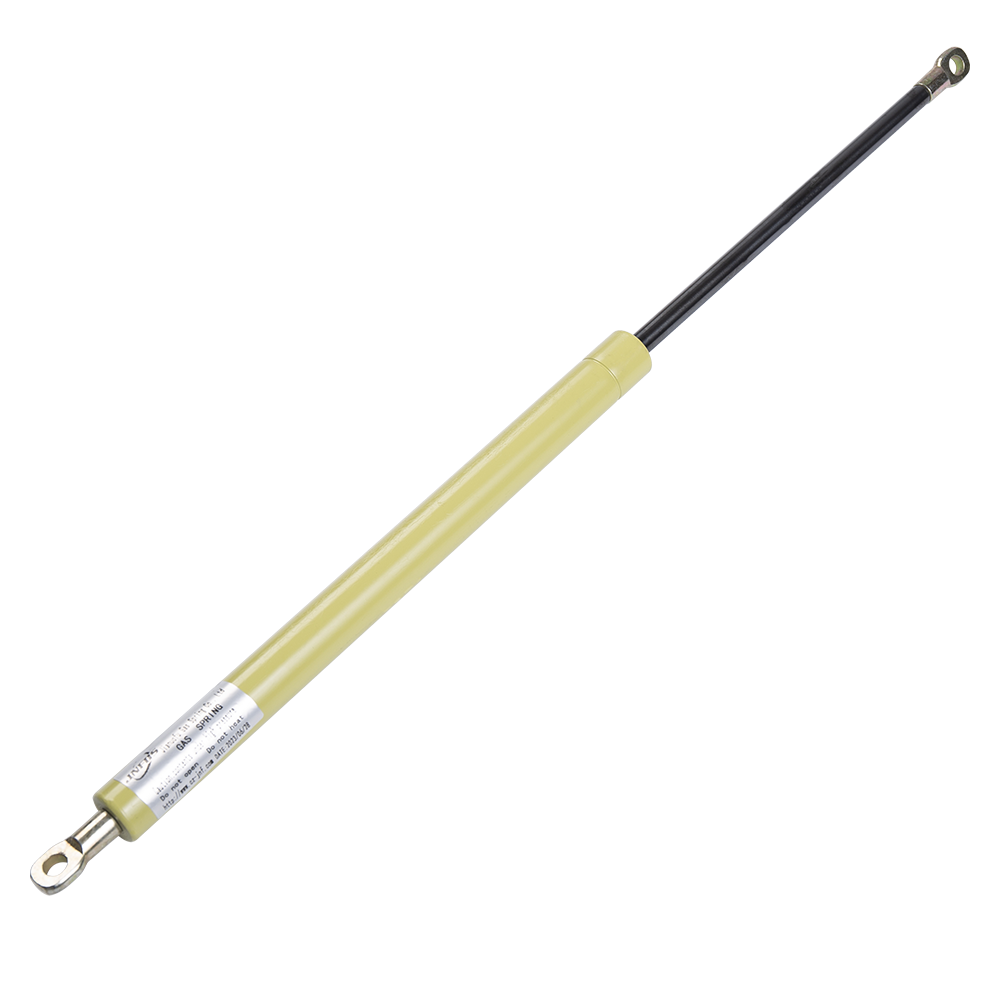Single-piece gas springs are widely used in various machinery and equipment, such as automobiles, furniture, industrial equipment, etc., because of their good support, buffering and adjustment functions. However, with the extension of use time or changes in external conditions, gas springs may have some common faults. The following are some common faults and their troubleshooting methods:
Gas springs lose support force or lack support force
Fault manifestation: The gas spring cannot provide sufficient support force or completely loses support force during use, resulting in the equipment being unable to maintain its original position or not having enough strength to support the load.
Cause:
Gas leakage: The nitrogen in the gas spring may be reduced due to seal damage or leakage, resulting in the inability to provide normal support force.
Low air pressure: After the gas spring is used for a long time, the gas will gradually leak and the air pressure will decrease.
Spring aging: Due to long-term use, the elastic material or sealing material of the gas spring may age and lose elasticity, resulting in a decrease in support force.
Troubleshooting method:
Check the sealing: Check whether the sealing part of the gas spring (such as piston rod seal, end seal ring, etc.) is damaged. If leakage is found, the seal should be replaced.
Re-inflate: If the air pressure is too low, you can use special equipment to re-inflate the gas spring to restore its original air pressure.
Replace the gas spring: If the gas spring cannot restore its normal support force due to long-term use or aging, a new gas spring should be replaced.
Gas spring leakage
Fault manifestation: There are traces of gas leakage on the surface of the gas spring, or the spring loses its support force, and abnormal noise is generated during operation.
Cause:
Damaged seal ring: The seal ring in the gas spring may be damaged due to long-term compression, friction or aging, causing gas leakage.

Improper installation: Improper installation of the gas spring, or external impact, extrusion and other factors, resulting in seal damage or increased gap between the piston and the shell.
Troubleshooting method:
Check the seal ring and interface: Check whether the seal ring at the end of the gas spring and the connection between the piston rod and the shell is intact. If the seal ring is damaged, it should be replaced in time.
Check the installation position: Make sure that the gas spring is installed in the correct position and avoid excessive external impact.
Inflation check: If the gas spring leakage is not obvious, you can apply soapy water to the connection when inflating to check whether bubbles are generated to further confirm the leakage point.
The gas spring is not stable, stuck or not smooth
Fault manifestation: The gas spring is stuck during use, the extension and retraction are not smooth, and even abnormal noise or vibration is emitted.
Cause:
Excessive friction between the piston rod and the guide rail: After long-term use, dust or other impurities may accumulate inside the gas spring, resulting in increased friction between the piston and the guide rail.
Insufficient lubrication: Insufficient lubrication inside the gas spring leads to increased friction between the moving parts, affecting the normal operation of the spring.
Foreign matter blocking: There may be foreign matter blocking inside or at the connection of the gas spring, resulting in restricted normal movement of the piston.
Troubleshooting method:
Cleaning and lubrication: Check whether the gas spring is stuck due to dust or impurity accumulation, clean the gas spring regularly, and apply appropriate lubricant to the moving parts to reduce friction.
Check the guide rail and piston rod: Check whether the piston rod and guide rail are worn or corroded, and replace them if necessary.
Check the stroke of the gas spring: Confirm whether the stroke of the gas spring is too long or too short, resulting in unstable phenomenon during operation.
For these faults, regular inspection, cleaning, lubrication, inflation and timely replacement of aging or damaged parts can effectively extend the service life of the gas spring and ensure its normal operation. If the fault cannot be eliminated, it is recommended to contact professional maintenance personnel or replace a new gas spring.


 English
English русский
русский











